(This Retrospective article was published in the November 2007 issue of Rider.)
STORY and photography BY CLEMENT SALVADORI
When Norton announced in December of 1987 that the company was going to produce 100 motorcycles powered by its air-cooled rotary engine, they were all spoken and paid for up front within a couple of weeks.
Quite astounding really, except these buyers were mainly savvy collectors, knowing that their purchase would surely increase in value. If the number had been 10,000, which is what the factory would have had to sell in order to expect reasonable profit, maybe the results would have been different.
The story of the Norton rotary engine is a pretty messy one, one of misdirection and missed opportunities. It began back in 1969 when BSA/Triumph hired an engineer named David Garside because he had worked on a rotary-engine project with the Rolls Royce company. For those unclear on the concept, rotary engines make power by one or more rotors rotating, as opposed to reciprocating engines which have pistons going up and down. The rotary has the advantage of fewer moving parts than any four-stroke engine, but is way more complicated. It is also thirsty, and offers no compression braking.
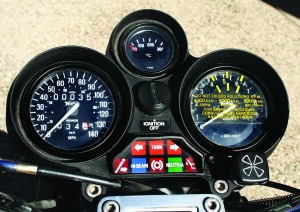
Nineteen-sixty-nine was not a stellar year to have been hired by the British motorcycle industry, which was going into an irrevocable tailspin, but Garside went to work on the idea of a small rotary that would fit into a 250 chassis. In 1973 the remnants of the once-great industry was lumped into one large group, Norton/Villiers/Triumph, headed by an astute businessman, Dennis Poore. He realized that the old pushrod, kickstart engines were fast approaching dinosaur status, but he had no real money for research and development. The best Poore could do under the circumstances was to develop the rubber-mounted Commando, but with this fellow Garside on staff he felt that the opportunity for a completely different motor was in the future.
Poore was not alone. Germany’s DKW was the first to test the waters with the short-lived 1974, 297cc Hercules W2000—the W to honor Fritz Wankel, who did crucial development on the rotary in the 1950s. Suzuki had the 497cc RE5 ready to go late in 1974, but it bombed financially. Yamaha’s management took note and sensibly pulled its rotary RZ201 out of production after showing a prototype in 1975. Even with this rather dismal beginning, Norton persevered.
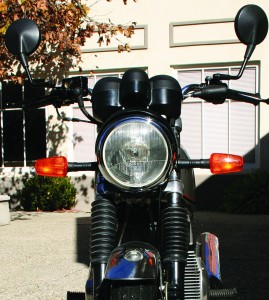
In 1975 NVT had to make a financial decision: Build an enlarged 870cc pushrod Trident, or develop the rotary. Poore thought that the rotary, when/if perfected, would have far greater sales potential in the future, and by 1977 the company—which had moved to the Midlands town of Shenstone—had a working 588cc twin-rotor engine. This was put to hard testing, and a police-only Interpol II model was being sold
to British forces in the early 1980s. It seemed to be a go, and by 1983 the marketing types were advocating the promotion of the rotary with a loud and colorful introduction of a civilian version. However, Poore, an engineer, was concerned that the air-cooled motor would not stand up to consumer abuse, and told his people to start working on a liquid-cooled version.
Four more years went by and Poore, now dying of cancer, sold the remnants of the Norton company to Phillipe LeRoux, a man more interested in profit than reputation. LeRoux quickly announced that 100 motorcycles using the air-cooled rotary would go on sale—for a modest 6,000 pounds, roughly $8,500.
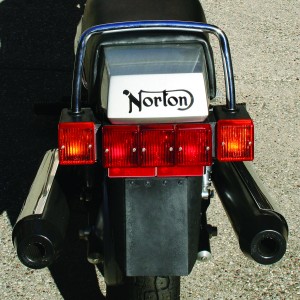
The claimed horsepower was 79 at 9,000 rpm; above the speedo and tach was a temperature gauge, which the rider was advised not to ignore when in heavy traffic. Getting the power to the gearbox, a five-speed unit off the Trident, required the use of a chain primary drive with a hydraulic tensioner and an 18-plate clutch. Final drive was also by chain, but totally enclosed within rubber sleeves; testers had run such chains more than 50,000 miles. The frame was monocoque, with a conventional fork on the front, a pair of Koni shocks at the back. Alloy wheels were 18 inches, with a 100/90 tire on the front, 110/90 on the rear, and three disc brakes by Brembo. It weighed more than 500 pounds, and maximum speed was reputed to be about 130 mph.
A full-on racing version was also prepared in 1987, with the factory estimating that the air-cooled race engine was putting out 135 horsepower at 9,200 rpm, with the potential for 160 horses. This was bolted into an aluminum twin-spar frame made by Spondon Engineering, noted British chassis specialists, with an Öhlins single shock at the back. Claimed dry weight was a mere 287 pounds.
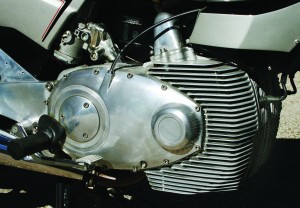
As mentioned before, these Classics were quickly snapped up, although few saw much use due to their collectible status, and not much wear and tear information on these 100 machines exists. But it was admittedly merely an interim model, as less than a year later Norton offered the liquid-cooled, fully faired Commander for sale. It had some small success, even though the price had been elevated to 7,600 pounds. It was a smooth, unexciting, reliable motorcycle, with the fairing covering up a lot of ugly plumbing, and riders complaining about limited cornering clearance.
The go-fast crowd began slavering when the F1 version was announced late in ’89, following up on Norton’s decision to return to racing. This model was boasting 95 horsepower at 9,500 rpm, bolted into the Spondon frame, with a sporting upside-down fork and a fully adjustable White Power single shock at the rear. This was a road-legal racer, like Honda’s RC30 and Yamaha FZR750R, and even more expensive—Norton’s top-of-the-line John Player Special costing more than $20,000. However, heat build-up within the fairing did not help the motor to retain its relatively high state of tune. In 1992 the F1 Sport was offered, with a fairing redesign that took care of the heat problem. Unfortunately, that year LeRoux was investigated for fiddling the books, and the company could get no more credit. Only 66 of the F1 Sport models ever left the Shenstone factory.
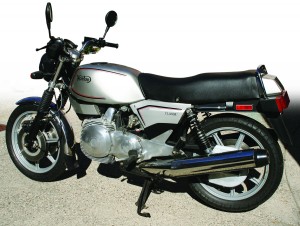
The racing results were quite successful, with Norton finishing second in the Isle of Man Senior TT in 1990, third in 1991 (disqualified for having an oversized gas tank), and first and third in 1992.
In 1993 Norton took second in Britain’s prestigious Supercup series, and first place in 1994.
Then, with no money coming in, it all went away. Less than 800 Norton rotaries, from the Interpol II to the F1 Sport, were ever sold.








have had number 84 since new 40000 odd miles never been touched rode it like i stole itgreat bike TED CARTER
What is the last 3 of you Vin? I just started storing a classic that I was told is the last one off the line